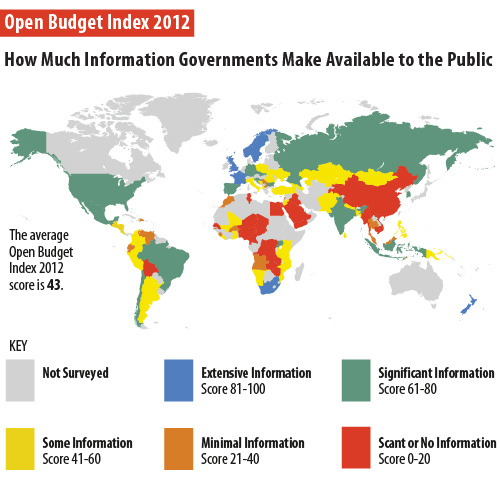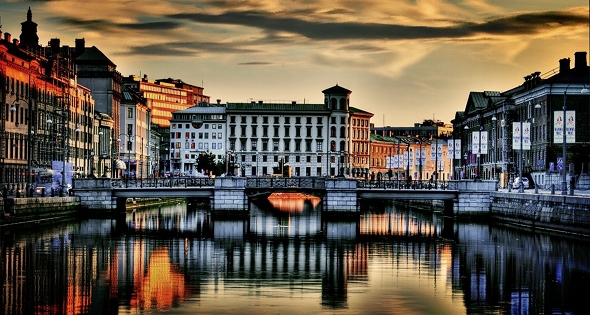The Swedish East Indiaman Gotheborg III Ship.
The city of Gothenburg has been home of the Swedish East India Company since the 1700s till today.
Photo: Ulrik Hasemann for SOIC.
Text © JE Nilsson, CM Cordeiro 2014
Abstracts from a presentation for Carthage College, Kenosha Wisconsin, USA. 20 Jan. 2014.
Centre for International Business Studies (CIBS)
School of Business, Economics and Law
University of Gothenburg, Sweden.
1. Introduction
This presentation is entitled “Swedish management and Gothenburg: a Nordic journey of discovery”, where I will share some insights into Sweden and Swedish management characteristics. Here, you will need to take the word ”Nordic” as a broadly defined term because even within the Nordic countries grouping, Sweden pretty much has a niche of its own.

World Values Survey, Inglehart-Welzel map.
Ref: Ronald Inglehart and Christian Welzel, Modernization, Cultural Change and Democracy New York: Cambridge University Press, 2005: page 63.
2. Sweden – the most secular country on the globe
Sweden for example, ranks as the world’s most secular country with a Gallup poll of 88% indicating they are non-religious. At the same time, it is also a country that seems to allow greatest self-expression and individual autonomy.
The reason for the country’s high secularism could be explained by its history.
2.1 During the Viking age and before the 11th century
The beliefs in Sweden and neighbouring countries were based on old indigenous traditions that provided security and structure for the society. Norse mythology with Gods like Thor, Odin, Freya etc. (etymological contributions to the names of the days of the week), prevailed with beliefs in natural forces that were tended to by a variety of sacrifices. Most important was the climate and the return of the sun, fertile ground and successful crops.
2.2 Catholicism in the 11th century
Around the 11th century these ideas were challenged through intensified contacts with eastern and western Europe and unfamiliar ideas such as Original Sin, Incarnation and the Trinity were introduced. Archaeological excavations of burial sites near Stockholm, the modern-day capital of Sweden, have shown that the actual Christianizing of Sweden was very slow even in the most central areas.
2.3 Lutheran Protestantism from 1530
During the early 16th century a Protestant Reformation took place in Sweden. By and large this was felt as politically motivated to secure control over the church and its assets. In 1531 all ecclesiastical property was transferred to the Crown.
2.4 Today “benign indifference”
As of 2012, about 67.5% of Swedish citizens are members of the Lutheran Church of Sweden. Less than 4% of the Church of Sweden membership attends public worship during an average week; about 2% are regular attendees. ”Regular” are by some defined as being present at your own baptism, confirmation, wedding and funeral.
3. Two large annual festivities

Midsummer Pole and celebrations, Swedish west coast.
Photo: JE Nilsson
There are two major festivities in Sweden that are celebrated by every Swedish household. The first is Christmas, that is celebrated on the 24th of December, coinciding with the winter solstice. This is marked by hanging sacrificial objects like ginger bread animals in a fir tree. The second is the midsummer solstice, which is celebrated annually by sticking a wooden pole dressed up with flowers, in the ground, and dancing around it. The festivities begin by eating fish and drinking strong alcoholic beverages. The party is expected to benefit from the midnight sun since at this time of the year the sun is at its highest and in the North of Sweden, the sun doesn’t set at all.
4. Food and its tradition
Until the Great Power era of the 17th and 18th century and its armies marching all over Europe, Swedes in general had little contact with foreign customs. Food was traditionally fish, meat and grain based prepared without much sophistication. Initially through warfare and later on through trade, foreign foodstuffs and new ideas were brought in. This continues until today when a Turkish-Italian fusion kebab pizza is now the number one most popular dish for the Swedish New Year’s Day dinner.
In accordance to history and tradition, raw pickled herring to breakfast is not unusual in the Scandinavian context.

Pickled herring – perfectly normal for breakfast in Sweden.
Photo: JE Nilsson
5. Characteristics of Swedish management / leadership
Early on as a doctoral student at the humanities faculty, I was part of the organizing committee to a Nordic conference on cross-cultural communication. Professors as well as students came together for a first meeting where I thought the purpose of which was to decide and delegate who was to do what in organizing this conference. The meeting took two hours, during which time, everything was discussed from possible venue to website, keynote speakers, costs, food, transport arrangement and hotel etc. After two hours, the meeting was adjourned and I turned to the other doctoral student who was my colleague and asked, “So, what is your role in this organizing committee?” She shrugged her shoulders. She didn’t know. “And, what is my role? What should I do?” She shrugged her shoulders again. She didn’t know. “Do what you want to do.” she concluded.
I was stunned at the lack of direction and clarity of delegation of tasks. I thought Swedish management was completely haphazard and working in that manner, there was no way we were going to organize a conference in the next few months.
But the conference was organized and in fact, ran quite smoothly, despite individuals never having any designated assignment or specific role.
It was this and numerous more examples of such meetings and projects that had my interest in Swedish management piqued.
How do the Vikings organize and manage things in the Land of the Midnight Sun?

The Midnight Sun.
Photo: Anda Bereczky, 2005.
So I set out to trace the process and try to understand what I could clearly see as empirical evidence of a certain type of behaviour at meetings and was happy to find some literature on what was called, “the Swedish management style”. I got in touch with Swedish top managers who worked in Singapore and I began asking them to describe their management style. To my delight, their answers correlated to the available literature on characteristics of Swedish management, that yes, it could come across as haphazard, lacking direction with no clear instruction and lacking definitive answers to problems if you had any as an employee. Towards the end of each interview, I would ask, “Would you describe this as a Swedish management style?” to which almost all of respondents denied there being a Swedish management style. Some were absolutely incredulous that I could describe their management style as “Swedish” and some went so far as to deny that Sweden had a culture of its own.
I thought all of this interesting because they were all Swedes and they were all consistently saying the same thing, that there was no Swedish management style. So I concluded that it was somewhat very Swedish to be ’invisible’ and to deny being Swedish.
5.1 Lateral hierarchy, consensus and being ’lagom’
This sense of invisibility, of blending-in and of being lagom or everything done in moderation, is also reflected in Sweden being one of the most egalitarian countries in the world.
Many Swedish top managers who worked in Asia for example, would prefer if you did not address them as ‘Boss’. Rather than give direct instructions for things to be done, Swedish managers would encourage employees to speak with each other, take consensus, make their own decisions, solve their own problems, going as far as to say, “Please don’t cc emails to me” in the sense, removing both the immediate authority, and perhaps even some security of the ‘Boss’ being there at all. But by doing so, it would encourage employees to take on individual responsibility, work outside of their designated boxes, to go ahead and make mistakes because from there, you learn, and the organization learns.

Bit Viking, Tarbit Shipping AB. Founded in Gothenburg in 1962 by Knut Hermansson and Sture Svanström.
This consensus driven process of Swedish leadership in an organization, can be likened to a tanker that is on a specific route headed towards a destination point. If the course were to change, then the change in direction is almost imperceptible on the surface. But change does take place and events move steadily forward with everyone concerned, onboard.
6. Summary of some interesting facts about Sweden
Apart from what I think are interesting leadership characteristics in Sweden, here are some other curious facts about the country:

Open Budget Survey 2012. Washington Post.
i. Sweden is one of the most open in information sharing, ranking tops around the world in government transparency. You’ll find that the ideology on open information sharing filters down to everyday living, where many Swedes are happy to share prized family recipes with you.
ii. After Norway, Sweden is the country that drinks the most coffee with at 8.2 kgs per person per year. Norway ranks at 9.9 kgs per person per year. And in serving coffee, no caffè Americanos please!
iii. Sweden ranks in the top countries for most number of researchers per million inhabitants, where you can ponder the correlation between the heavy coffee drinking and the researching.
iv. The British have invaded almost 90% of the countries around the globe of which Sweden is just not one of them. On the other had, Sweden has been one of the three countries in history, to have tried to invade Russia where the army of Charles XII of Sweden met with the same fate as Napoleon’s and Hitler’s.
v. Swedish neutrality refers to Sweden’s policy of neutrality in armed conflicts, which has been in effect since the early 19th century. They have an official security policy and strategy as ”non-participation in military alliances during peacetime and neutrality during wartime.”

Gothenburg Grand Harbour Channel bathed in gemstone colours.
A view not much changed from the 18th century when Gothenburg was a walled and fortified city.
Photo: Sucaba
With that, I wish you all a pleasant stay with some adventurous exploring of the city of Gothenburg, a place that has also been home of the Swedish East India Company since the 1700s till today, and part of the reason why I see this harbour city as Sweden’s gate to the world.
Thank you!
———–
Dr. Cheryl Marie Cordeiro is a Research Fellow at the Centre for International Business Studies, School of Business, Economics and Law at the University of Gothenburg. She has a PhD in linguistics, specializing in critical discourse analysis applied to the various aspects of the field of international business studies. Her research interests include studying top-level Swedish management, what characterizes Swedish leadership and the workings of it across cultures.
